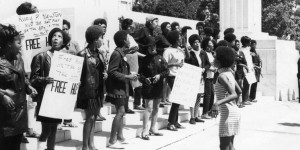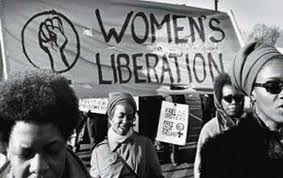Ageism in a modern society
 Are you a greedy geezer? You know, one of those resource-draining, money-sucking seniors at the center of the debate on some of the nation’s most important health policy issues (e.g., Medicare, Social Security)? If not, rest assured that you will be at some point. Or at least so goes the myth. Old people have morphed into the new ‘welfare queens’ of the future in that there is a pervasive public perception that old people are greedy and consume resources to the detriment of the younger members of society. These sentiments not only feed into public discourse about policy decisions, but contribute to an even larger issue of intergenerational division and age segregation.
Are you a greedy geezer? You know, one of those resource-draining, money-sucking seniors at the center of the debate on some of the nation’s most important health policy issues (e.g., Medicare, Social Security)? If not, rest assured that you will be at some point. Or at least so goes the myth. Old people have morphed into the new ‘welfare queens’ of the future in that there is a pervasive public perception that old people are greedy and consume resources to the detriment of the younger members of society. These sentiments not only feed into public discourse about policy decisions, but contribute to an even larger issue of intergenerational division and age segregation.
You may be wondering why (or even if) age segregation is a significant public health issue. Indulge for a moment in a brief thought experiment and substitute the word “age” in the previous sentence for “racial” or “residential” segregation. Decades of research have concluded that segregation is bad for the health of individuals, communities and society at large. While researchers have scrutinized residential segregation and health disparities in great detail, segregation by age has received far less attention.  Yet age segregation represents one of the most important policy-relevant issues facing a future aging society. Why? On a fundamental level, age segregation blocks essential opportunities for interaction and discussion across generational lines, which may foster cultural dissonance and ageism (e.g., greedy geezer myth). We (non-old adults) rarely forge relationships with older adults, and are left to form our own assumptions, biases and stereotypes based on very little factual information. Second, for older adults, age segregation is a threat to continued productive activities, mobility and exercise, and it thwarts embeddedness, social interaction, and increases the risk for isolation and loneliness in later life. The benefits of social embeddedness have been well documented. Furthermore, because elders are at increased risk of decline in functional independence as they age, having a network of close friends and family that can provide support may be particularly useful for maintaining well-being and an independent aging-in-place lifestyle in later years.
Yet age segregation represents one of the most important policy-relevant issues facing a future aging society. Why? On a fundamental level, age segregation blocks essential opportunities for interaction and discussion across generational lines, which may foster cultural dissonance and ageism (e.g., greedy geezer myth). We (non-old adults) rarely forge relationships with older adults, and are left to form our own assumptions, biases and stereotypes based on very little factual information. Second, for older adults, age segregation is a threat to continued productive activities, mobility and exercise, and it thwarts embeddedness, social interaction, and increases the risk for isolation and loneliness in later life. The benefits of social embeddedness have been well documented. Furthermore, because elders are at increased risk of decline in functional independence as they age, having a network of close friends and family that can provide support may be particularly useful for maintaining well-being and an independent aging-in-place lifestyle in later years.
 Thus, shifting perceptions and stereotypes about old people is ultimately paramount to aging policy and interventions geared toward accommodating and integrating older adults into the fabric of American society. So what do we do as public health researchers? How do we design interventions to promote an age-integrated society? How can intergenerational social bonds be strengthened? And finally, how do we address the issue of age and the structural lag for current and future generations of aging adults?
Thus, shifting perceptions and stereotypes about old people is ultimately paramount to aging policy and interventions geared toward accommodating and integrating older adults into the fabric of American society. So what do we do as public health researchers? How do we design interventions to promote an age-integrated society? How can intergenerational social bonds be strengthened? And finally, how do we address the issue of age and the structural lag for current and future generations of aging adults?
One means of achieving such a shift entails promoting generativity, or more specifically, a generative society. A generative society can evolve by motivating and incentivizing prosocial and cooperative behaviors, and perhaps most importantly, designing generativity-based programs that are sustainable. Early foundational research in this area has found that creating intergenerational programs that provide educational benefits for the young and allow the old to serve in productive roles is a viable means to reduce generational tension and create successfully aging societies. My work to date examines generativity as a feature of personal development and a correlate of successful aging. I believe expanding this work will help bridge the gap between translating individual motivations for prosocial and cooperative behaviors to a community-level effort, and provide the framework for building strategies that will increase the visibility and integration of older adults into communities.



